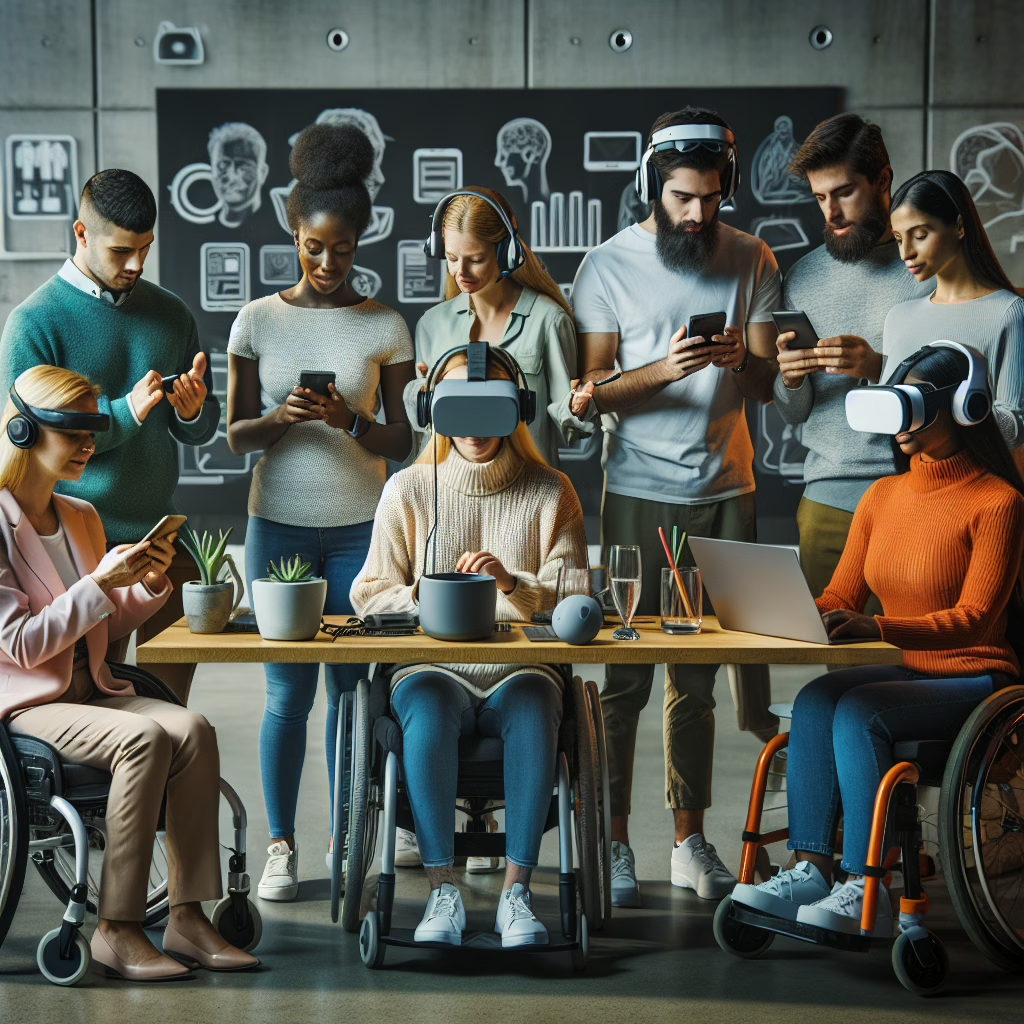In the year 2025, technology has become a trusty sidekick for many, especially for those with disabilities. Who would have thought that our gadgets could help bridge gaps and create opportunities? The recent discussions by the PA Human Relations Commission have illuminated just how technology can help people with disabilities thrive in ways we never imagined. So grab your favorite beverage, sit back, and let’s explore this fascinating intersection of tech and accessibility.
Unlocking New Possibilities: Tech for Everyone
Remember when we thought smartphones were just fancy devices for checking social media? Well, hold onto your hats because they’ve morphed into essential tools that can help people with disabilities navigate life more easily. From voice-activated assistants to apps designed specifically for accessibility, technology is on a mission to ensure no one gets left behind.
The PA Human Relations Commission recently gathered to discuss various innovative technologies that have emerged as game-changers for individuals with disabilities. They emphasized that these advancements aren’t just about convenience; they are about empowerment. Imagine using your phone to control your environment—lights, doors, even your coffee maker! It’s like having a personal butler in your pocket.
The Impact of Assistive Technologies
Assistive technologies are at the forefront of this revolution. Devices like hearing aids have gone high-tech, integrating seamlessly with smartphones to enhance sound quality while filtering out background noise. For individuals with mobility challenges, adaptive devices allow them to engage in activities they love without missing a beat. Here’s a quick rundown of some notable assistive technologies:
- Speech recognition software that transforms voice to text.
- Smart home devices that provide automation for daily tasks.
- Wearable technology that monitors health metrics in real time.
Let’s not forget about the magic of virtual reality (VR). This isn’t just for gamers anymore! VR offers incredible opportunities for therapy and training, helping individuals simulate real-world scenarios in a safe space. Whether it’s practicing social interactions or overcoming phobias, VR is proving to be a versatile ally.
Community Engagement and Collaboration
The key takeaway from the commission’s meeting is the importance of community engagement. Tech companies are encouraged to collaborate with organizations that serve individuals with disabilities. This partnership can lead to the creation of tailored solutions that address real needs rather than just theoretical ones. After all, who knows better about accessibility challenges than those who face them daily?
Furthermore, public awareness campaigns are crucial in promoting understanding and acceptance of these technologies. It’s all well and good to have cutting-edge devices, but if no one knows about them or how to use them, we might as well be talking about a sci-fi movie! Engaging stories from individuals who have benefited from these technologies can inspire others and spark interest.
Education and Training: A Must-Have for Empowerment
Education plays a pivotal role in ensuring that individuals know how to utilize these technologies effectively. Workshops and training sessions can empower people with disabilities by teaching them how to leverage technology for their benefit. Imagine being able to navigate public transport independently or managing personal finances through accessible apps—all thanks to some handy training!
The PA Human Relations Commission highlighted initiatives aimed at integrating tech education into schools and community programs. By fostering an environment where everyone can learn about assistive technologies, we create a more inclusive society where everyone feels empowered. Here are a few examples of educational programs boosting tech literacy:
- Community seminars on assistive technology.
- Hands-on training sessions in public libraries.
- Online courses tailored for people with disabilities that focus on practical applications.
A Bright Future Ahead: Continued Innovation
As we look toward the future, it’s clear that technology will continue its role as a catalyst for change. With ongoing advancements and a commitment to inclusivity, we can expect even more innovative solutions on the horizon. The combination of creativity and technology is set to redefine what is possible for individuals with disabilities. Exciting developments such as AI-driven apps and advanced robotics are on the cusp of transforming everyday experiences.
So here’s the bottom line: technology is not just enhancing lives; it’s revolutionizing them! If you think about it, every swipe on your touchscreen is a step toward greater accessibility for all. Isn’t it time we embraced this change and celebrated the amazing potential technology holds?
We invite you to share your thoughts! How do you see technology helping people with disabilities? What innovations excite you the most? Let us know in the comments below!
A special thank you to Fox43 for their insightful coverage on this important topic!
For more on how technology is shaping lives, check out our article on Livonia police use grappler technology to stop drunk driver or explore how California’s AI Law has set rules for generative AI.

